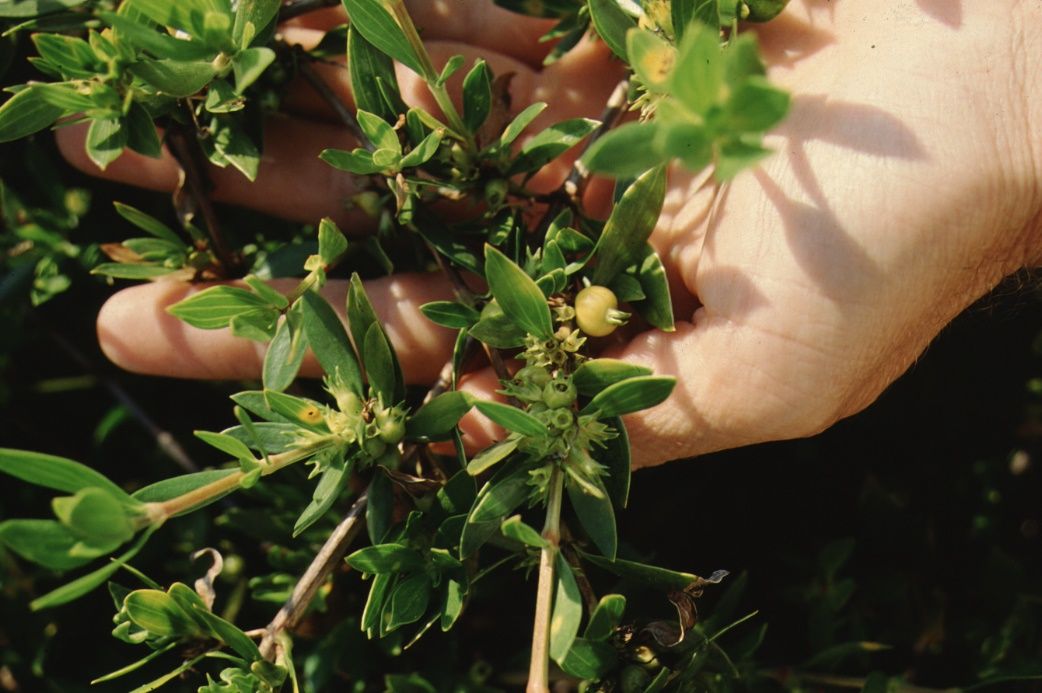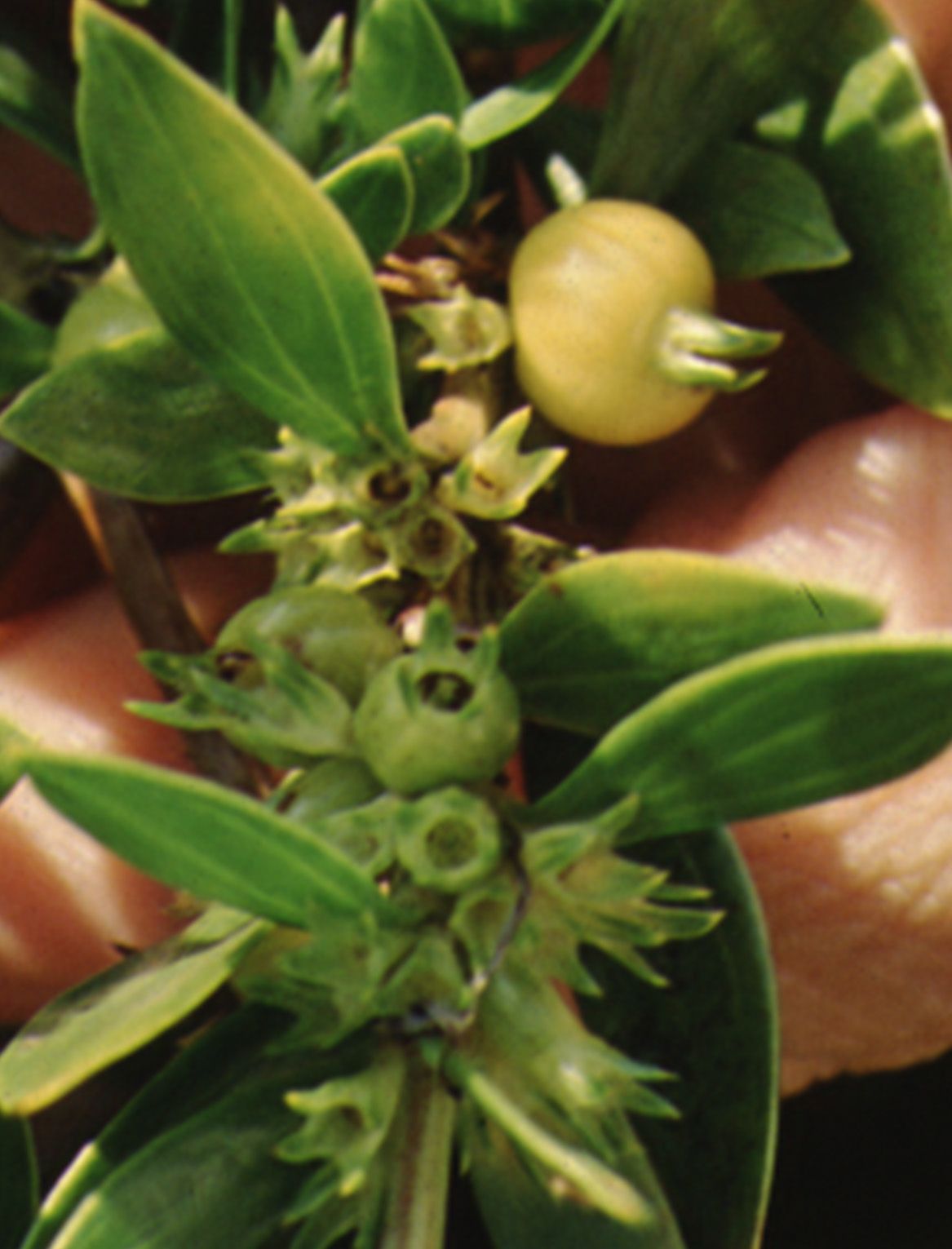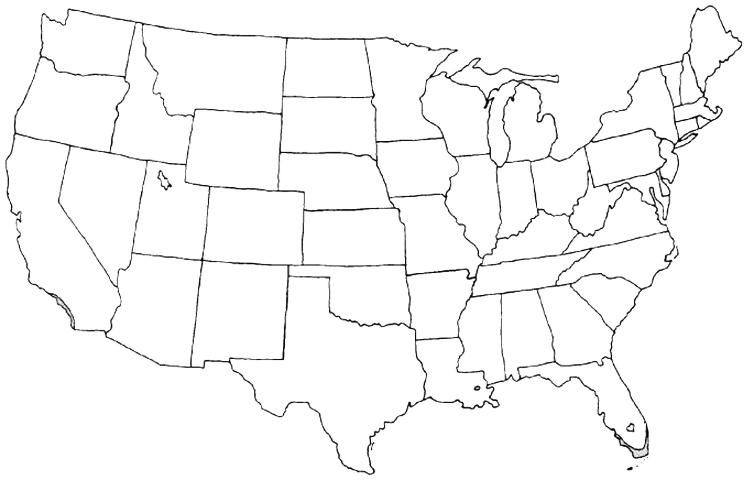Introduction
The golden creeper is a 1 to 3 foot tall, prostrate ground cover that is native to south Florida beaches. This plant has small, light green, succulent leaves borne on bright red stems that help it to survive in dry conditions. Inconspicuous, pinkish white, tubular flowers occur throughout the year and are followed by attractive golden berries. These golden berries, in part, give this plant its common name.

Credit: Edward F. Gilman, UF/IFAS

Credit: Edward F. Gilman, UF/IFAS

Credit: Edward F. Gilman, UF/IFAS

Credit: Edward F. Gilman, UF/IFAS
General Information
Scientific name: Ernodea littoralis
Pronunciation: air-NOE-dee-uh lit-taw-RAIL-liss
Common name(s): golden creeper, beach creeper, coughbush
Family: Rubiaceae
Plant type: ground cover
USDA hardiness zones: 10B through 11 (Figure 5)
Planting month for zone 10 and 11: year round
Origin: native to Florida
Invasive potential: not known to be invasive
Uses: ground cover
Availability: somewhat available, may have to go out of the region to find the plant

Credit:
Description
Height: 1 to 3 feet
Spread: depends upon supporting structure
Plant habit: spreading; prostrate (flat)
Plant density: moderate
Growth rate: moderate
Texture: fine
Foliage
Leaf arrangement: opposite/subopposite
Leaf type: simple
Leaf margin: entire
Leaf shape: ovate
Leaf venation: bowed
Leaf type and persistence: evergreen
Leaf blade length: less than 2 inches
Leaf color: green
Fall color: no fall color change
Fall characteristic: not showy
Flower
Flower color: white
Flower characteristic: year-round flowering
Fruit
Fruit shape: round
Fruit length: less than .5 inch
Fruit cover: fleshy
Fruit color: yellow
Fruit characteristic: inconspicuous and not showy
Trunk and Branches
Trunk/bark/branches: not particularly showy; typically multi-trunked or clumping stems
Current year stem/twig color: reddish
Current year stem/twig thickness: medium
Culture
Light requirement: plant grows in full sun
Soil tolerances: acidic; slightly alkaline; sand; clay
Drought tolerance: high
Soil salt tolerances: good
Plant spacing: 36 to 60 inches
Other
Roots: usually not a problem
Winter interest: no special winter interest
Outstanding plant: plant has outstanding ornamental features and could be planted more
Pest resistance: no serious pests are normally seen on the plant
Use and Management
The golden creeper is an excellent sand binder and is great for coastal landscapes. This ground cover is an outstanding landscape plant for south Florida coastal areas and could be used more often. It is also suited for planting in dry landscapes away from the coast receiving little or no irrigation.
Golden creeper will thrive in well-drained sandy soils. It should be planted in an area of the landscape that receives full sun. Ernodea littoralis is tolerant of drought and salt spray but often dies back if over irrigated.
Pests and Diseases
Plants in well drained soils along the coast in the full sun usually have no problems.